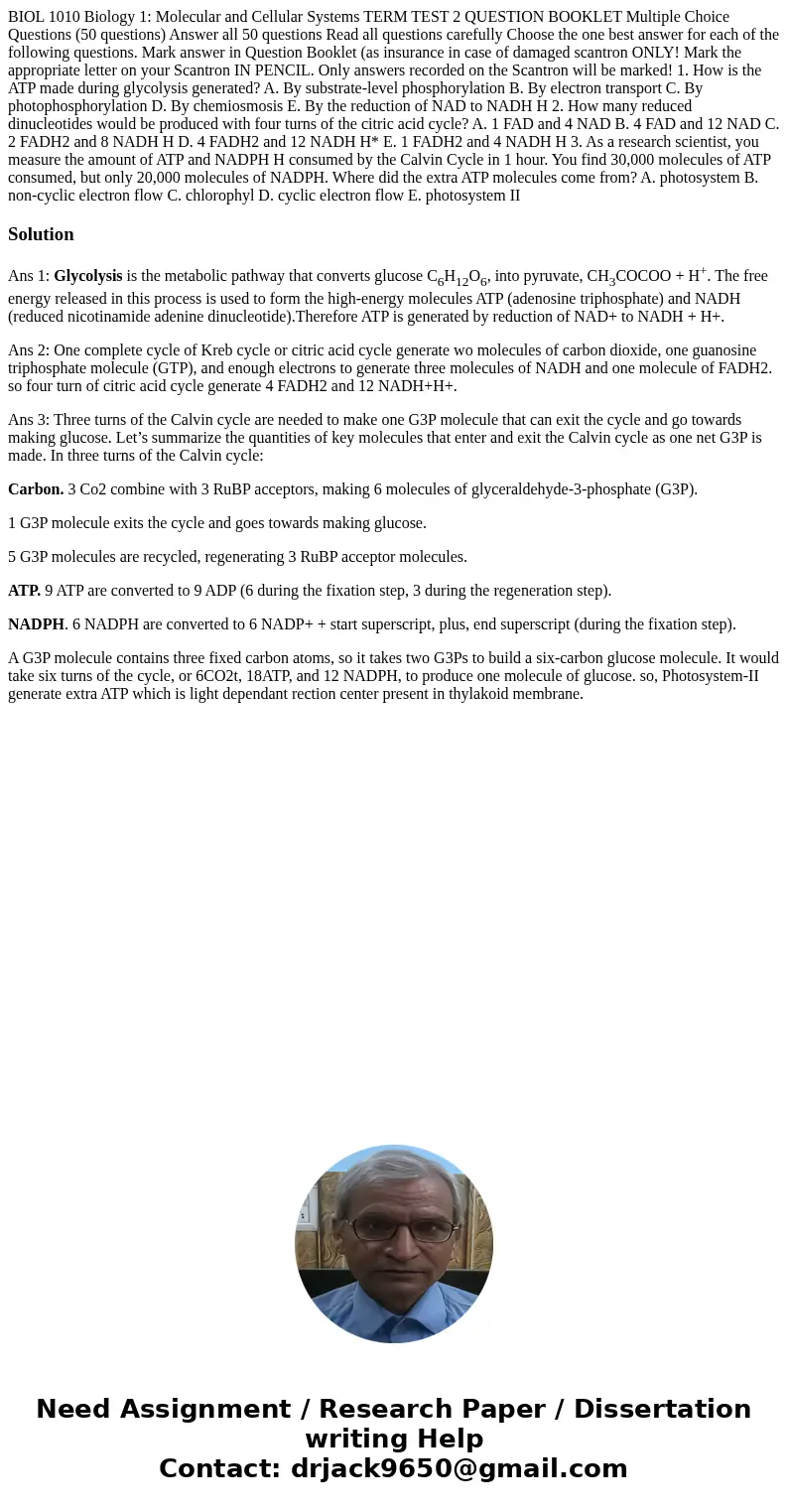BIOL 1010 Biology 1 Molecular and Cellular Systems TERM TEST
Solution
Ans 1: Glycolysis is the metabolic pathway that converts glucose C6H12O6, into pyruvate, CH3COCOO + H+. The free energy released in this process is used to form the high-energy molecules ATP (adenosine triphosphate) and NADH (reduced nicotinamide adenine dinucleotide).Therefore ATP is generated by reduction of NAD+ to NADH + H+.
Ans 2: One complete cycle of Kreb cycle or citric acid cycle generate wo molecules of carbon dioxide, one guanosine triphosphate molecule (GTP), and enough electrons to generate three molecules of NADH and one molecule of FADH2. so four turn of citric acid cycle generate 4 FADH2 and 12 NADH+H+.
Ans 3: Three turns of the Calvin cycle are needed to make one G3P molecule that can exit the cycle and go towards making glucose. Let’s summarize the quantities of key molecules that enter and exit the Calvin cycle as one net G3P is made. In three turns of the Calvin cycle:
Carbon. 3 Co2 combine with 3 RuBP acceptors, making 6 molecules of glyceraldehyde-3-phosphate (G3P).
1 G3P molecule exits the cycle and goes towards making glucose.
5 G3P molecules are recycled, regenerating 3 RuBP acceptor molecules.
ATP. 9 ATP are converted to 9 ADP (6 during the fixation step, 3 during the regeneration step).
NADPH. 6 NADPH are converted to 6 NADP+ + start superscript, plus, end superscript (during the fixation step).
A G3P molecule contains three fixed carbon atoms, so it takes two G3Ps to build a six-carbon glucose molecule. It would take six turns of the cycle, or 6CO2t, 18ATP, and 12 NADPH, to produce one molecule of glucose. so, Photosystem-II generate extra ATP which is light dependant rection center present in thylakoid membrane.

 Homework Sourse
Homework Sourse